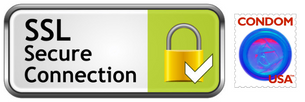
Can CBD Really Do All That?
How one molecule from the cannabis plant came to be seen as a therapeutic cure-all.
When Catherine Jacobson first heard about the promise of cannabis, she was at wits’ end. Her 3-year-old son, Ben, had suffered from epileptic seizures since he was 3 months old, a result of a brain malformation called polymicrogyria. Over the years, Jacobson and her husband, Aaron, have tried giving him at least 16 different drugs, but none provided lasting relief. They lived with the grim prognosis that their son — whose cognitive abilities never advanced beyond those of a 1-year-old — would likely continue to endure seizures until the cumulative brain injuries led to his death.
In early 2012, when Jacobson learned about cannabis at a conference organized by the Epilepsy Therapy Project, she felt a flicker of hope. The meeting, in downtown San Francisco, was unlike others she had attended, which were usually geared toward lab scientists and not directly focused on helping patients. This gathering aimed to get new treatments into patients’ hands as quickly as possible. Attendees weren’t just scientists and people from the pharmaceutical industry. They also included, on one day of the event, families of patients with epilepsy.
The tip came from a father named Jason David, with whom Jacobson began talking by chance outside a presentation hall. He wasn’t a presenter or even very interested in the goings-on at the conference. He had mostly lost faith in conventional medicine during his own family’s ordeal. But he claimed to have successfully treated his son’s seizures with a cannabis extract, and now he was trying to spread the word to anyone who would listen.
The idea to try cannabis extract came to David after he found out that the federal government held a patent on cannabidiol, a molecule derived from the cannabis plant that is commonly referred to as CBD. Unlike the better-known marijuana molecule delta-9-tetrahydrocannabinol, or THC, CBD isn’t psychoactive; it doesn’t get users high. But in the late 1990s, scientists at the National Institutes of Health discovered that it could produce remarkable medicinal effects. In test tubes, the molecule shielded neurons from oxidative stress, a damaging process common in many neurological disorders, including epilepsy.
Jacobson had a Ph.D. in neuroscience. She had started her postdoctoral research at the University of California, San Francisco, by studying how cancer cells metastasize and spread, but after Ben was born, she moved to Stanford and switched her focus to epilepsy — a shift that compounded her anguish. She often wept in the parking lot before heading into the lab, overwhelmed by dread at the prospect of deliberately causing epilepsy in rodents. “I couldn’t watch animals seize all day and then watch Ben seize all night,” she told me. “It was just too much.”
After meeting David and reading through the small body of published work on CBD, Jacobson changed postdoctoral directions once again, from primary research to the study of this community of parents who were treating their epileptic children with cannabis extracts. In reality, she was preparing to join it herself. One small, double-blind study particularly caught her attention. In 1980, scientists in Brazil treated eight epileptic patients with CBD and eight patients with sugar pills as a placebo. For half the group that received CBD, the seizures almost completely disappeared; another three experienced a reduction in the intensity of their seizures. Only one person in the placebo group got better.
The epilepsy drugs that had been approved to date, none of which had helped Ben much, typically targeted the same few ion channels and receptors on the surface of neurons. But CBD worked on different and still somewhat mysterious pathways. If she could find a suitable CBD extract, Jacobson thought, she might have a truly new class of drug for Ben. The other experimental drugs and devices she had heard about at epilepsy conferences were under development, unapproved by the F.D.A. and thus largely unavailable. But medical marijuana had been legal in California since 1996, so CBD was theoretically accessible right away.
Seven years later, cannabidiol is everywhere. We are bombarded by a dizzying variety of CBD-infused products: beers, gummies, chocolates and marshmallows; lotions to rub on aching joints; oils to swallow; vaginal suppositories for “soothing,” in one company’s words, “the area that needs it most.” CVS and Walgreens each recently announced plans to sell CBD products in certain states. Jason David now sells a cannabis extract called Jayden’s Juice, named for his son — one of several extracts on the market, including Haleigh’s Hope and Charlotte’s Web, that are named after children who are said to have benefited from being treated with CBD.
Thank you MOISES VELASQUEZ-MANOFF
